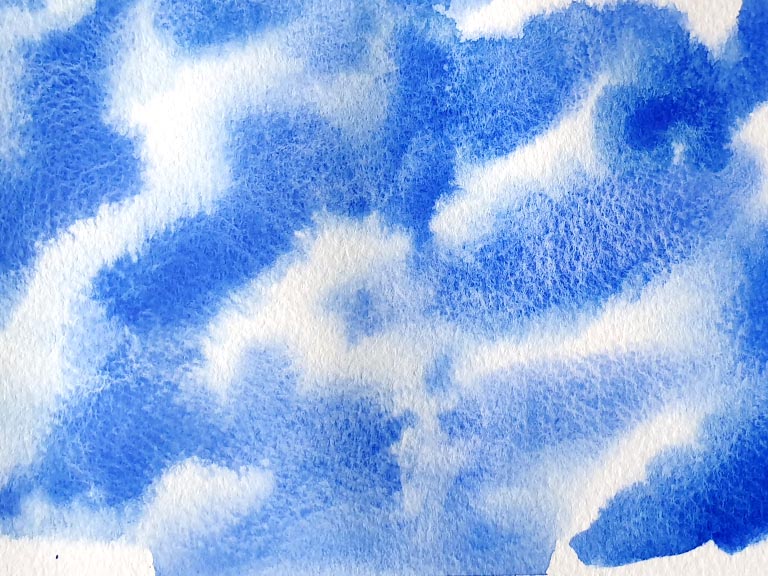Have you ever seen someone raving about a watercolour paint that granulates and wondered what it means? Or started painting and found your paint to be mottled and textured, and wondered if it should be like that? In this guide we’ll look at granulation in watercolour, what causes it and how to make the most of its effects.
What does granulation or granulating paint mean?
Granulation in watercolour painting refers to the unique textural effect that occurs when certain pigments in the paint settle into small, grain-like particles on the surface of the paper. This results in a rich, dappled effect that can add depth and interest to a painting.
Some artists love granulation, while others prefer a smooth and even texture to their paints. It’s all (like everything with art!) a matter of personal taste.
What causes granulation?
The main cause of granulating paint is the pigment – the material that brings the colour. Some pigments are heavier, larger or more prone to clumping, helping them granulate as the water dries off.
Granulation can also be provoked by using a lot of water, which allows the pigment to float on the surface and clump together. Some artists report that using hard water (i.e. tap water from a hard water area) will result in more granulation than those who use distilled water.
And finally, rough-textured watercolour paper can create small wells that catch the pigment, resulting in a textured finish.
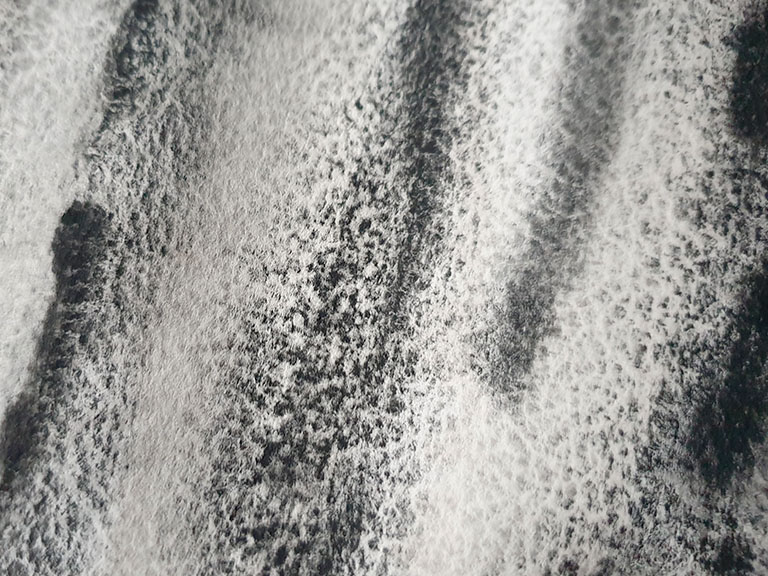
Which watercolour paints have granulation?
Traditionally, watercolour paints were made with natural pigments including colourful stones and organic materials that were ground down (milled) to be smooth. However, many of these never achieved a fine finish, resulting in lots of granulation. Nowadays most paints are made with synthetic pigments to make them cheaper and more stable, but some paint companies aim to recreate these effects where possible.
This means that some of the most common granulating pigments in watercolour painting include modern versions of these traditional colours, such as ultramarine blue, alizarin crimson, burnt sienna, lamp black and cobalt. Generally, earth tones, blacks and blues are among the most common.
However, the formulations for pigments and paint consistency varies a lot between brands – some are more prone to granulation while others favour a smooth finish.
Do all watercolour paints granulate?
No, some paints have smoother pigments or fomulations, and do not granulate. Dye-based paints like liquid watercolours will not granulate as they don’t use pigment.
On the other hand, handmade watercolours may granulate more as they are milled by hand, often resulting in larger clumps of pigment. You may find a lot of variation between brands and colours as you paint.
Can you show an example of granulation?
This image shows how some paints granulate and others don’t. I’m using Winsor & Newton Professional paints and have created a gradient with water to show the granulation.
The top layer contains four granulating paints: Mars Black, Ultramarine Blue, Raw Umber, Rose Madder.
Across the bottom are four non or less-granulating paints in similar colours: Neutral Tint, Prussian Blue, Burnt Umber, Opera Rose.
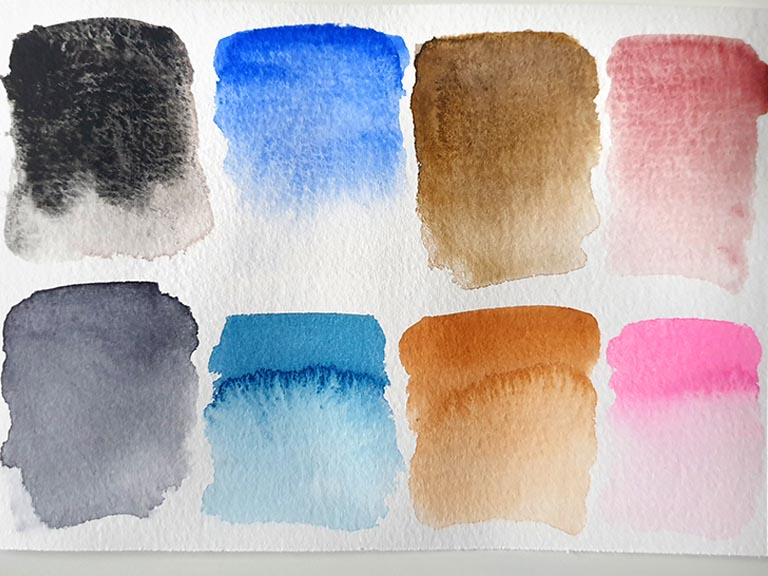
What is granulation used for?
Many artists love granulation, and it’s especially common to replicate natural textures, for example in landscapes to create textured fields, beaches and mountains, and to mimic brick, tarmac and concrete effects in urban styles.
Granulating skies are also very common, as are pigment clusters in monochrome paintings. I’ve even seen adventurous artists use them in portraits!
How to use granulation in watercolour painting
Here are some tips for getting the most out of granulating pigments in your watercolour paintings:
Experiment with different pigments
Each granulating pigment will behave differently and produce a unique effect, so it’s a good idea to experiment with different pigments to see which ones you like best. To save costs, you can order dot cards from paint brands, which contain a tiny spot of paint to experiment with.
Use a lot of water
Granulating pigments tend to separate more when applied to a wet surface, so try using a lot of water or wetting the surface of your paper before applying the paint. This makes granulation the ideal effect for skies, backgrounds and other large, wet areas of a painting.
Add more water as the paint dries
Sometimes you can provoke more granulation by adding a drop of water as the paint starts to dry. This can lift the top later of watercolour, rewetting it and causing it to clump. Try swiping a large wet brush over the area as it dries.
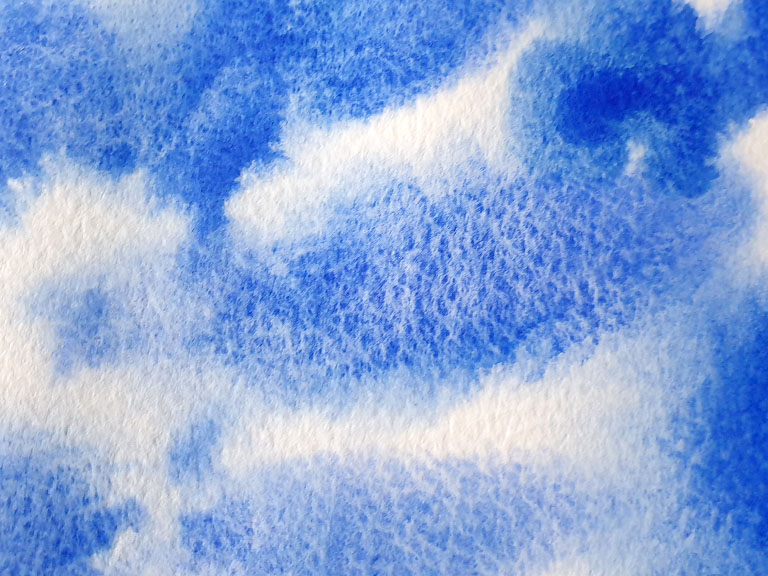
Apply in multiple layers
For the best granulation effect, apply the paint in multiple layers, allowing each layer to dry completely before adding the next. This will help to build up the granulation by allowing the wet paints to clump around the existing textures.
Combine with other techniques
Granulation can be combined with other watercolour techniques, such as wet-on-wet or glazing, to create interesting and unique effects in your paintings. As the effects vary by brand and colour, the best way to learn is to experiment with the paints you have.
What is granulation medium?
Granulation medium is a specially formulated product that can be added to watercolour paints to either cause them to granulate, or to enhance their granulating effect.
This medium helps to thicken the paint and increase the size of the granulated particles, making them more visible and prominent in the final painting. Some mediums also work by pushing the paint away from certain areas of the paper to create texture.
How to use granulation medium
To use granulation medium, simply mix a small amount of the liquid into your watercolour paint before applying it to your paper. Make sure you mix this is a separate palette to it can easily be cleaned. I use Winsor & Newton granulation medium, and a spare palette or old plate.
The amount of medium you use will depend on the desired effect, so it’s a good idea to experiment with different amounts to see what works best for you. You may only need a little bit for some paints, but others will require more medium before you see any separation.
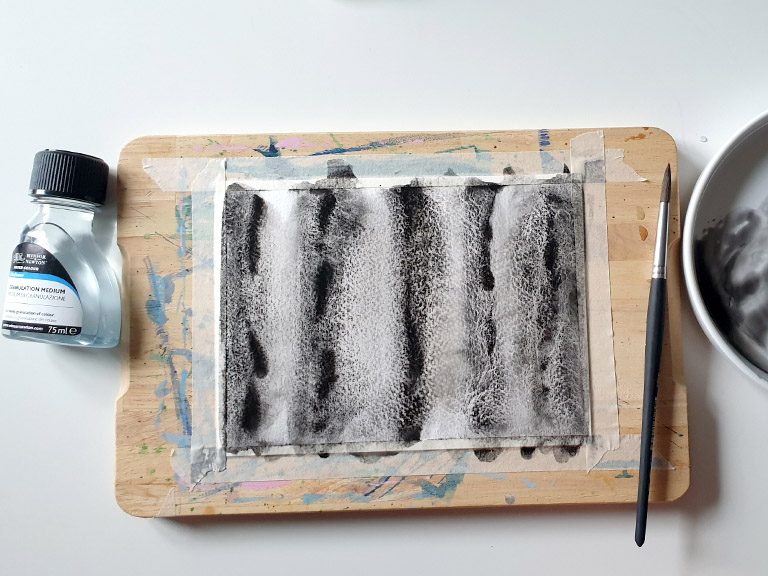
When using granulation medium, it’s important to keep in mind that it will increase the drying time of your paint, so be sure to allow enough time for the paint to fully dry before adding any additional layers or details.
Some medium is also available in a spray bottle, which can be spritzed over your paint on the paper, rather than mixed into the paint before. In this case, make sure you hold it a good distance from the paper, at least 20cm, to ensure you get a fine mist rather than a big pool of medium.
Now you know how to use and enhance granulation in watercolour painting to add a rich and dimensional effect to your artwork. By using granulating pigments and even a special medium, you can create a unique and textured effect that will set your paintings apart.
More creative watercolour techniques
Download my free watercolour supply guide
Feeling overwhelmed and confused by watercolour paints, papers and brushes? Download my free guide filled with insider info, including a list of good supplies for every budget, and my complete supply list!
